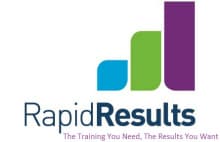
Business is tough and going to get tougher so how do we perform as best as we can? As a training company, I am obviously going to write about continuous development!
Surveys have shown that less than 20% of New Zealand businesses measure any tangible impact from training programmes. This is possibly the reason so many companies put a hold on training when an economic downturn threatens – which is exactly the opposite of what should take place. When times are tough, that’s when staff need to be highly skilled, effective and motivated in a competitive market.
When discretionary spending is tight, why should you train your teams, and how can you measure if you are getting a return on investment?
We can separate the measurable return into hard and soft measures. Hard measures can be determined in such areas as increased productivity, increases in sales and reductions in staff turnover. For example, a staff member who is aligned with company values, engaged with clients, and aware of their contribution to the success of the business is unlikely to be looking for work elsewhere. You don’t want to lose a valuable staff member to the competition, and the cost to replace and train a replacement is, on average, $18,982. The return on investment for a one-day workshop can be calculated by taking the benefit of retaining just one team member, less the cost of the workshop.
Soft measures can include areas such as morale, improved teamwork, increased customer satisfaction and better communications between departments. It is these soft measures that are often difficult to put a monetary value or return on. Let’s take customer complaints as an example. If, due to poor handling of a challenging customer, there is escalation to a supervisor or manager. The time taken to talk with, calm, and retain the client is far longer than a standard conversation – and at a higher hourly rate. By calculating the number of escalated conversations x time to rectify x hourly rate will give the cost of each escalation. If all staff are trained in how to handle an upset customer then the dollar value of reducing escalations can be measured.
Here’s the maths to find the percentage Return on Investment
Total Benefit -Total CostsTotal Costs ×100% = ROI
Want to invest in developing or retraining your team?
Send an email to carolyn@rapidresults.co.nz NOW.

Recent Comments